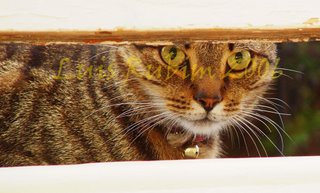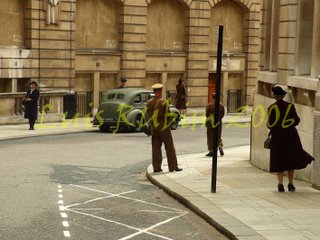Revolutionary? I think it's rather counter-evolutionary, at least on paper. I've got to tell you that Fujifilm's latest decisions have been amazing me in a slightly disappointing way. While at this point in the race its direct competition is offering some image stabilisation system in their cameras,Fujifilm still refuses to provide that in their cameras (not that I am a great proponent of the system but I admit it has its usefulness and in fact it proves at times very useful) and instead implements technologies that seem rather useless. Fujifilm will be launching a camera, the S6500, that in fact has a lot going for it, it's got a great sensor (coming from their own F30) with clean 6.3 Megapixels (a decision they should have taken with their S9500. They could do it now but it may mean marketing suicide, the megapixel question is more a race than a question these days), an ISO range of 100-3200 and a Fujinon 28-300 lens (good range but still not a Super EBC Fujinon lens, I am a demanding tog :-D ). The camera is actually aimed at the regular consumer, but that doesn't stop me from wanting one, after all they are 28-300mm I can fit in my pocket (more or less, I have big pockets,vestwise that is) with an ISO range that covers everything, but Face Detection????
Firstly how it works. Fujifilm decided to build into the hardware of the camera the FD system that not only focusses on the faces by detecting shapes that match a head and a mouth in short, and exposing correctly for the faces. The thing that irritates me the most about this is that it seems like a rather unnecessary implementation that will drive the cost up and looks like a simple marketing trick, since the problem it addresses is not a common complaint or it is nearly a non occurrence. On top of this an implementation, implemented over a much more necessary one, which is image stabilisation (which goes under a variety of other names, like AS, IS or OIS all shorts for the same thing). With those 300mm at the telephoto end of the lens shake will be inevitable if you can't compensate with a shutter speed. And what if I want to do a Tunnick and focus on a group of arses??? Or backs??? What will the FD system do??? Blush??? ;-D (Nevertheless a good point).
Throughout photographic history, people, both photographers and regular consumers have taken photos of groups of people successfully without the need of such a technology. But people do need at times something to stabilise their cameras and not all will want to carry a tripod around with them. Fujifilm is favouring an Anti-Blur or high ISO solution according to some, instead of implementing image stabilisation. The argument is that their SuperCCD produces such clean images throughout by using an agressive Auto ISO mode, that it is a real substitute. This is in part true, the SuperCCD (in fact my favourite sensor) produces clean images, but surely you can't say that its ISO800 is as clean and a substitute to ISO200 as some would advocate.
It is cleaner comparable to other sensors at the same sensitivity and I can say to an extent one whole stop down at times, making lets say an ISO800 photo look like an ISO400 (funny enough I have experienced something similar with a roll of Superia 1600 that some looked at and thought it was a 800 and some a 400), but never a true substitute for a cleaner ISO setting. Also to consider when using this technique/option, is at what size you will want to print your photo as at bigger sizes you will increase the grain/noise visibility. Why would anyone want a grainy photo when there is enough light for having a cleaner , higher quality image taken at a lower ISO setting with image stabilisation (which is something now very common in digital cameras). Then there is the noise reduction system which smoothens out detail which some people employ either in camera or in post production. Again, not a good substitute.
Don't get me wrong, I want to see the camera myself, I may even invest in one as I was pleased with Fujifilm's decision of reducing the megapixel count (this counteracts image noise),using their best sensor, good ISO range, continuous shooting in RAW mode and combining it with a lens with good range. I do expect it to have good if not excellent image quality for the reasons afore mentioned, but the implementation of a technology that seems of little use looks only like a marketing trick to drive the cost up, instead of implementing a truly useful feature. I personally believe that it would have been better for their own marketing to have implemented some image stabilisation system and I think they would sell plenty more cameras.
Let me state again that I am a big Fujifilm fan if that doesn't transpire through this posting, but being a fan is also about being able to see where your preferred product provider is failing as in fact they produce something for us as users and we invest our money on their products, so this should be a somewhat symbiotic relationship. In general, I can say Fujifilm listens to their users, being a user myself I know this, but their latest decisions in my opinion have not been the best. I hope Fujifilm takes a better route with the successor to the S9000/9500 as it is surely the model with the best prospects of delivering a future photographer's tool in a compact package. Currently as it is it leaves a lot to be desired.It has amassed a good amount of complaints since it's launch, from quality control issues to image quality issues (seems slightly out of touch with the regular Fujifilm "punch" and doesn't quite live up to those 9MP in my opinion). Normally, complaints fade away after a few months and people get to know their camera, but this one has been having non-stop complaints since its launch. Having tested one myself for a couple of weeks, I can say that a lot of them are well founded.
Personally for the moment I will stick with my current Fujifilm S20pro with it's lovely SuperCCD SR sensor (even though it has it's shortcomings it is still a well thought out camera with a refined feature set even if fewer compared to more updated or current cameras, which produces quality images even with it's much lower pixel count, not to mention build quality) and using Fujifilm's transparency films.
Until next time,
Luis


 And please!!! There are no encrypted analogies as some have suggested previous to posting these pictures!!!
And please!!! There are no encrypted analogies as some have suggested previous to posting these pictures!!!








 Of note is the wonderfull wardrobe, the vehicles and the way the set was done as some of the pictures I took are very hard to place as being of our days. Everything was intrinsically worked down the very last, minute, details.
Of note is the wonderfull wardrobe, the vehicles and the way the set was done as some of the pictures I took are very hard to place as being of our days. Everything was intrinsically worked down the very last, minute, details.